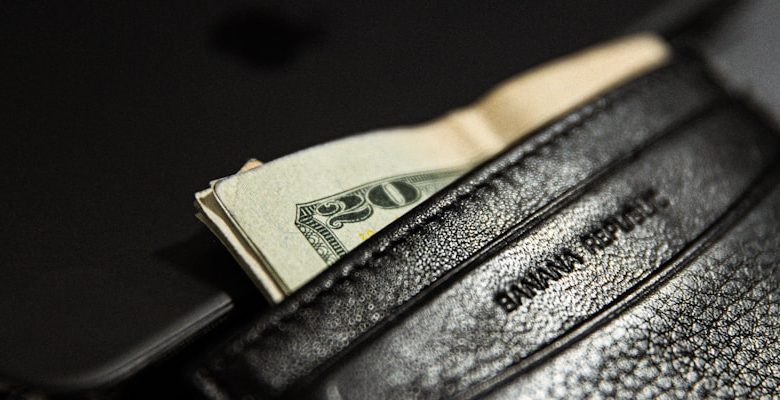Evaluating Wallet Security: What to Look For

- Understanding the importance of wallet security
- Common threats to wallet security
- Key features to consider when evaluating wallet security
- Tips for choosing a secure wallet
- Comparing different types of wallet security measures
- Best practices for protecting your cryptocurrency wallet
Understanding the importance of wallet security
Ensuring the security of your wallet is crucial in protecting your assets from unauthorized access and potential theft. By understanding the importance of wallet security, you can take the necessary steps to safeguard your funds and personal information.
One of the key aspects of wallet security is the use of strong passwords. It is essential to create a unique and complex password that includes a combination of letters, numbers, and special characters. Avoid using easily guessable passwords such as “123456” or “password” as they can make your wallet vulnerable to hacking attempts.
In addition to using strong passwords, enabling two-factor authentication (2FA) can provide an extra layer of security for your wallet. 2FA requires you to verify your identity through a second method, such as a text message or authentication app, before accessing your funds. This can help prevent unauthorized access even if your password is compromised.
Regularly updating your wallet software is also important for maintaining security. Developers often release updates to address vulnerabilities and improve overall security, so it is essential to keep your wallet up to date to protect against potential threats.
Lastly, be cautious of phishing scams and only share your wallet address with trusted sources. Avoid clicking on suspicious links or providing your private keys to unknown parties, as this can lead to unauthorized access to your wallet.
By prioritizing wallet security and taking proactive measures to protect your funds, you can minimize the risk of theft and ensure the safety of your assets in the digital world.
Common threats to wallet security
When evaluating wallet security, it is important to be aware of the common threats that can compromise the safety of your funds. By understanding these risks, you can take the necessary precautions to protect your assets. Here are some of the most prevalent threats to wallet security:
- Phishing Attacks: Phishing attacks are a common tactic used by cybercriminals to trick individuals into revealing their sensitive information, such as login credentials or private keys. These attacks often involve fraudulent emails or websites that mimic legitimate services, making it difficult to distinguish between the real and fake.
- Malware: Malware is malicious software designed to infiltrate and damage computer systems. When it comes to wallet security, malware can be used to steal wallet files or capture keystrokes, giving attackers access to your funds. It is essential to keep your devices protected with antivirus software and avoid downloading suspicious files.
- Physical Theft: Physical theft is a straightforward yet significant threat to wallet security. If your wallet or private keys are stolen, unauthorized individuals can easily access your funds. To prevent physical theft, it is advisable to store your wallet in a secure location and avoid sharing your private keys with anyone.
- Weak Passwords: Weak passwords are a common vulnerability that can compromise the security of your wallet. Using simple or easily guessable passwords makes it easier for attackers to gain unauthorized access to your funds. It is recommended to use strong, unique passwords for your wallets and enable two-factor authentication for an extra layer of security.
- Unsecured Networks: Connecting to unsecured networks, such as public Wi-Fi, can expose your wallet to potential security risks. Attackers can intercept data transmitted over unsecured networks, compromising the confidentiality of your information. When accessing your wallet, make sure to use a secure and private network to minimize the risk of interception.
Key features to consider when evaluating wallet security
When evaluating the security of a wallet, there are several key features to consider that can help protect your assets from potential threats. One important factor to look for is multi-factor authentication, which adds an extra layer of security by requiring more than just a password to access your wallet. Another crucial feature is encryption, which scrambles your data to make it unreadable to unauthorized users. Additionally, consider the option of using a hardware wallet, which stores your keys offline and is less susceptible to hacking. Regular software updates are also essential to ensure that your wallet has the latest security patches and protections against emerging threats. Finally, be sure to choose a wallet provider with a solid reputation and track record of keeping users’ funds safe. By carefully evaluating these key features, you can help safeguard your cryptocurrency investments and minimize the risk of theft or loss.
Tips for choosing a secure wallet
When evaluating different wallet options for security, there are several important factors to consider to ensure that your digital assets are safe from potential threats. Here are some tips to help you choose a secure wallet:
1. **Research**: Before selecting a wallet, take the time to research different options available on the market. Look for reviews from reputable sources and consider the track record of the wallet provider in terms of security.
2. **Encryption**: Opt for a wallet that offers strong encryption to protect your private keys and personal information. This will help prevent unauthorized access to your funds.
3. **Two-factor authentication**: Choose a wallet that supports two-factor authentication (2FA) as an added layer of security. This will require you to provide a second form of verification, such as a code sent to your phone, when accessing your wallet.
4. **Backup and recovery**: Ensure that the wallet you choose offers a reliable backup and recovery process. This will allow you to restore your funds in case your device is lost or damaged.
5. **Open-source code**: Consider using a wallet that has open-source code, as this allows for greater transparency and community scrutiny. Open-source wallets are often subject to frequent security audits and updates.
By following these tips and prioritizing security features when choosing a wallet, you can better protect your digital assets from potential threats. Remember to stay informed about the latest security practices and regularly update your wallet software to maintain a high level of security.
Comparing different types of wallet security measures
When it comes to evaluating wallet security, it is essential to compare different types of security measures available in the market. One of the most common security measures is two-factor authentication, which adds an extra layer of protection by requiring users to provide two different forms of identification before accessing their wallets. This can include something they know, like a password, and something they have, like a fingerprint or a security token.
Another important security measure to consider is encryption. Encryption technology scrambles data to make it unreadable to anyone who doesn’t have the key to decrypt it. This is crucial for protecting sensitive information stored in wallets from being accessed by unauthorized parties. Look for wallets that use strong encryption algorithms to safeguard your data effectively.
Additionally, biometric authentication is becoming increasingly popular as a security measure for wallets. This technology uses unique physical characteristics, such as fingerprints or facial recognition, to verify the user’s identity. Biometric authentication is difficult to replicate, making it a highly secure way to protect wallets from unauthorized access.
Furthermore, some wallets offer multisignature functionality, which requires multiple private keys to authorize transactions. This means that even if one key is compromised, the wallet remains secure. Multisignature wallets are particularly useful for businesses and organizations that need to manage funds securely.
Overall, comparing different types of wallet security measures is crucial for choosing a wallet that offers robust protection for your digital assets. By considering factors such as two-factor authentication, encryption, biometric authentication, and multisignature functionality, you can ensure that your wallet is secure from potential threats.
Best practices for protecting your cryptocurrency wallet
When it comes to protecting your cryptocurrency wallet, there are several best practices you should follow to ensure the security of your digital assets. By implementing these measures, you can minimize the risk of theft and unauthorized access to your funds. Here are some tips to help you keep your cryptocurrency wallet safe:
- Use a hardware wallet: Hardware wallets are considered one of the safest options for storing cryptocurrencies. These devices store your private keys offline, making it much harder for hackers to access your funds.
- Enable two-factor authentication: Two-factor authentication adds an extra layer of security to your wallet by requiring a second form of verification, such as a code sent to your phone, in addition to your password.
- Keep your software up to date: Make sure to regularly update your wallet software to protect against any known security vulnerabilities. Developers often release patches to address potential threats, so staying up to date is crucial.
- Backup your wallet: Regularly backup your wallet to ensure that you can still access your funds in case your device is lost or damaged. Store your backup in a secure location, such as a safe deposit box.
- Avoid public Wi-Fi: When accessing your wallet, avoid using public Wi-Fi networks, as they can be insecure and leave your device vulnerable to attacks. Instead, use a secure and private network to protect your information.
By following these best practices, you can help protect your cryptocurrency wallet and keep your digital assets secure. Remember to stay vigilant and take proactive steps to safeguard your funds from potential threats.



